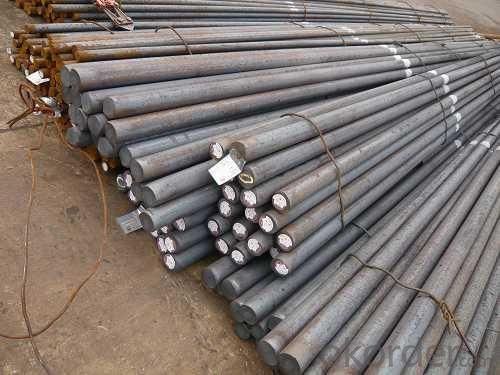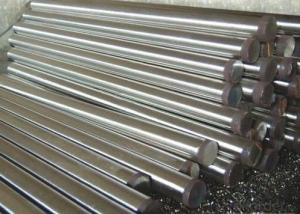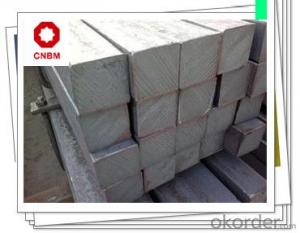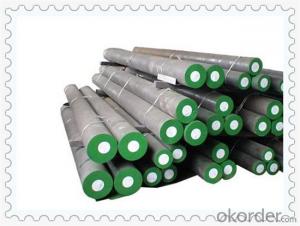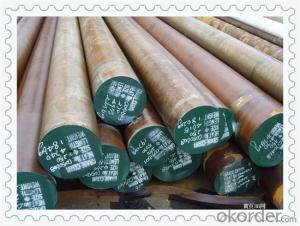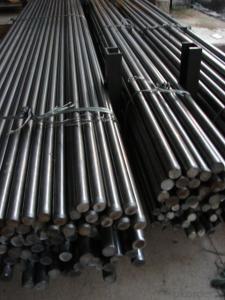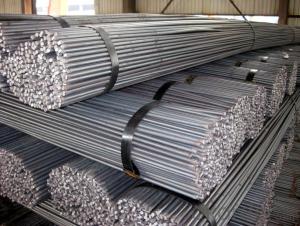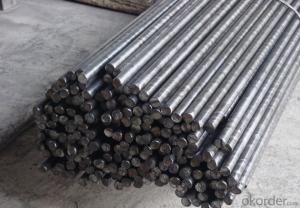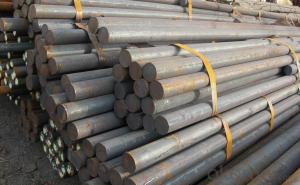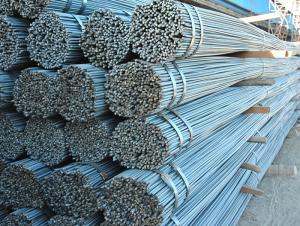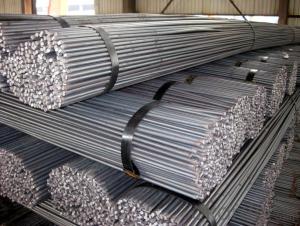GB 45#/SAE 1045 Steel Round Bar 28mm/30mm
- Loading Port:
- China main port
- Payment Terms:
- TT or LC
- Min Order Qty:
- 50 m.t
- Supply Capability:
- 10000 m.t/month
OKorder Service Pledge
OKorder Financial Service
You Might Also Like
GB 45#/SAE 1045 Steel Round Bar 28mm/30mm
Description:
-Specification: 28mm/30mm
-Length: 6m/12m
-Standard: GB/SAE/Japanese Standard
-Material: GB 45#/SAE1045/S45C
Chemical Composition of GB 45#/SAE 1045 Steel Round Bar 28mm/30mm:
| C | Si | Mn | P | S | Ni | Cr | Cu |
| 0.42-0.50 | 0.17-0.37 | 0.50-0.80 | ≤0.035 | ≤0.035 | ≤0.30 | ≤0.25 | ≤0.25 |
Packaging & Delivery of GB 45#/SAE 1045 Steel Round Bar 28mm/30mm:
Packaging Detail: All goods are packed in bundle with steel strips and shipped by break bulk vessel or container (depend on target market and different ports)
Delivery Detail: 45 days
MOQ: 50 tons per specification; we can negotiate the quantity if the specification is normal or we have stock of one specification.
Weight: The price invoicing on theoretical weight basis or actual weight basis depends on customer’s request.
Shipment: The shipment of bulk break or container is depends on customer’s request and the situation of the port of destination.
Documents given: Full set of original clean on board bill of lading; Original signed commercial invoice; Original packing list; Policy of insurance; Certificate of origin and what the target market needs.
Payment:
-Invoicing on theoretical weight or actual weight a s customer’s request.
-FOB, CFR or CIF.
-Regular terms of payment:
1, 30% payment in advance, the remaining balance (70% payment) against the copy of B/L.
2, 30% payment in advance, the remaining balance (70% L/C) against the copy of B/L.
3, Negotiable.
Images of GB 45#/SAE 1045 Steel Round Bar 28mm/30mm:
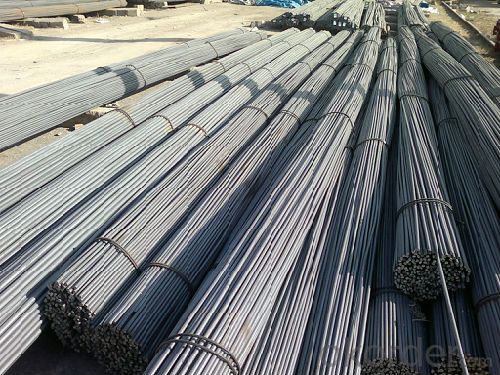
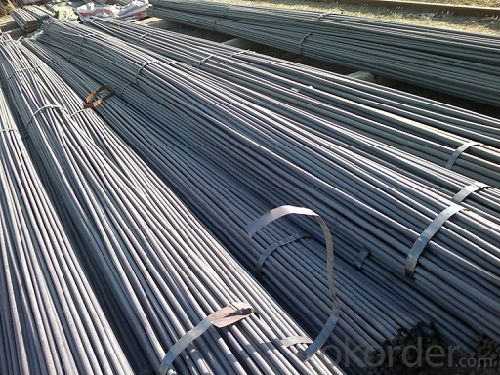
*If you would like to get our price, please inform us the size, standard/material and quantity. Thank you very much for your attention.
- Q: Can steel round bars be used for making renewable energy systems?
- Yes, steel round bars can be used for making renewable energy systems. Steel is a versatile and durable material that can be used in various components of renewable energy systems such as wind turbines, solar panel frames, and hydroelectric power plants. Its strength and resistance to corrosion make it suitable for withstanding the harsh conditions often encountered in renewable energy applications.
- Q: Can steel round bars be used in the agricultural industry?
- Indeed, the agricultural industry can utilize steel round bars. Within this sector, there exists a broad array of applications for them, including the construction of fences, gates, and livestock enclosures. Moreover, steel round bars are frequently employed as support and reinforcement in structures like barns, sheds, and agricultural machinery. Due to their exceptional strength and durability, they are well-suited for enduring the challenging conditions and heavy loads often encountered in agricultural environments. Furthermore, steel round bars can undergo further processing and fabrication, resulting in an assortment of agricultural tools and equipment, such as hitches, plows, and cultivators. In summary, steel round bars represent a versatile and dependable material capable of effectively satisfying the agricultural industry's requirements.
- Q: What are the advantages of using cobalt-alloy steel round bars?
- There are several advantages of using cobalt-alloy steel round bars. Firstly, cobalt-alloy steel has excellent strength, hardness, and wear resistance, making it suitable for applications that require durability and long-lasting performance. Additionally, cobalt-alloy steel has high temperature resistance, making it ideal for use in high-temperature environments. Furthermore, cobalt-alloy steel offers excellent corrosion resistance, making it suitable for applications in harsh and corrosive environments. Lastly, cobalt-alloy steel round bars can be easily machined and fabricated, offering flexibility and ease of use for various manufacturing processes.
- Q: Difference between forging and round steel
- The castings need to be uniform in each piece without any porosity, excess space, inclusions, or other defects. The component produced by this method has a high ratio of strength to weight. These elements are usually used in aircraft structures.
- Q: Are steel round bars suitable for marine propeller applications?
- Yes, steel round bars are suitable for marine propeller applications. Steel is a widely used material in marine engineering due to its high strength, durability, and corrosion resistance. Steel round bars provide the necessary strength and stiffness required for propeller applications, ensuring efficient propulsion and withstanding the harsh conditions of marine environments.
- Q: Can steel round bars be used in the manufacturing of bearings?
- Yes, steel round bars can be used in the manufacturing of bearings. Steel is a common material used for bearing manufacturing due to its high strength, durability, and ability to withstand heavy loads and friction. The steel round bars are typically machined and processed to form the bearing components, such as the inner and outer rings, rollers, or balls, which are then assembled to create the final bearing product.
- Q: What is the difference between a smooth and a deformed steel round bar?
- A smooth steel round bar is characterized by its consistently even surface, free from any visible imperfections or deformities. It is typically produced using the hot rolling technique, which involves heating a steel billet and passing it through a series of rolling mills to achieve the desired shape and surface finish. Smooth steel round bars are commonly employed in applications where aesthetics and surface quality are of utmost importance, such as architectural designs or decorative metalwork. Contrarily, a deformed steel round bar possesses intentional deformations or patterns on its surface. These deformations can take various forms, including ridges, ribs, or indentations. The purpose of incorporating deformations on the surface of a steel round bar is to enhance its ability to bond with concrete or other materials. The irregular surface of a deformed bar provides increased friction and better adhesion, thereby improving the structural integrity of reinforced concrete structures. Deformed steel round bars find primary use in construction projects, particularly in reinforced concrete structures like columns, beams, and slabs. The deformations on the bar's surface serve to prevent slippage between the steel and concrete, ensuring a stronger bond and enhancing the overall stability and durability of the structure. To summarize, the key distinction between a smooth and a deformed steel round bar lies in their surface characteristics and intended applications. Smooth bars possess a uniform and smooth surface, making them suitable for applications that prioritize aesthetics and surface quality. Deformed bars, on the other hand, possess intentional deformations to enhance bonding with concrete, making them well-suited for construction projects that require reinforced concrete structures.
- Q: Can steel round bars be anodized?
- No, steel round bars cannot be anodized. Anodizing is a process that is specific to aluminum and its alloys.
- Q: What are the different types of steel round bar surface finishes used in the marine industry?
- In the marine industry, there are various types of steel round bar surface finishes used. These include polished, satin, brushed, and blasted finishes. Each finish offers different levels of smoothness, texture, and corrosion resistance, allowing for suitable applications in marine environments.
- Q: Can steel round bars be used in high-pressure applications?
- Indeed, high-pressure applications can make use of steel round bars. Notably recognized for their robustness and endurance, steel round bars are well-suited for a range of industrial and mechanical uses. Their capacity to endure immense pressure while offering structural stability has rendered them a favored option in industries like oil and gas, construction, and manufacturing. Nonetheless, selecting the appropriate grade and quality of steel round bars is crucial to guarantee they can withstand the precise pressure demands of the given application.
Send your message to us
GB 45#/SAE 1045 Steel Round Bar 28mm/30mm
- Loading Port:
- China main port
- Payment Terms:
- TT or LC
- Min Order Qty:
- 50 m.t
- Supply Capability:
- 10000 m.t/month
OKorder Service Pledge
OKorder Financial Service
Similar products
Hot products
Hot Searches
Related keywords



